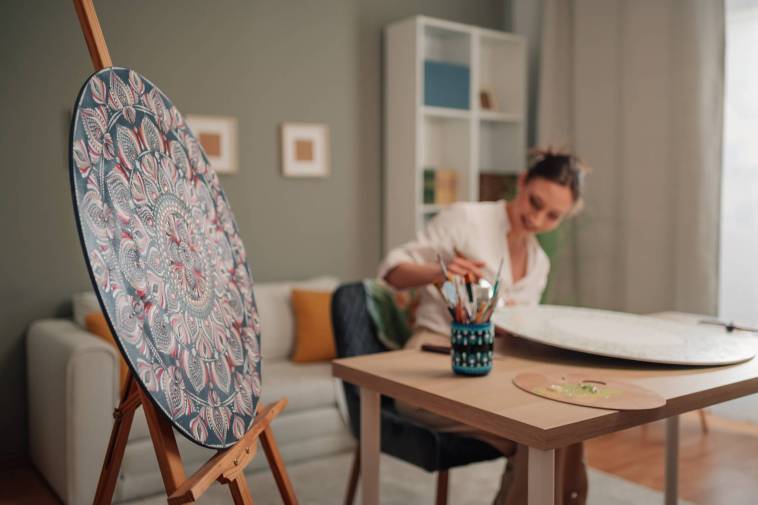1. Introduction
Pyntekvister is more than just a decorative element it’s an expression of heritage, artistry, and cultural continuity. Rooted in Nordic traditions, the word “Pyntekvister” literally translates to “decorative twigs,” but its meaning goes far beyond that. It encapsulates the beauty of bringing nature indoors, transforming simple branches into symbolic art forms. Today, celebrated not only in traditional ceremonies but also as a staple in contemporary decorative art.
This article explores how bridges the past and present, offering insight into its cultural roots, evolving styles, modern applications, and its growing presence in global art and design spaces.
Table of Contents
- Introduction
- The Origins
- Cultural and Historical Significance
- Symbolism Behind
- Materials Traditionally Used
- The Evolution of Pyntekvister in Modern Times
- Techniques and Craftsmanship
- Pyntekvister in Scandinavian Celebrations
- The Role of Nature in Decorative Traditions
- Contemporary Artists Redefining
- How Pyntekvister Embodies Minimalism and Elegance
- Pyntekvister in Interior Design Trends
- Sustainable and Eco-Friendly Pyntekvister Practices
- The Market for Pyntekvister: Local and Global Reach
- DIY Pyntekvister: A Creative Guide
- Psychological Benefits of Crafting and Displaying
- Pyntekvister as Gifts and Tokens of Meaning
- Cross-Cultural Comparisons: Similar Traditions Worldwide
- The Digital Era: Promoting Pyntekvister Through Social Media
- Future of Pyntekvister in Art and Culture
- Conclusion
2. The Origins of Pyntekvister
The tradition can be traced back centuries in Scandinavia. In agrarian societies, twigs, branches, and natural materials were often used as decorations during seasonal festivals. These arrangements symbolized life, fertility, and the cyclical rhythms of nature. Villagers would collect branches in spring and adorn them with ribbons, flowers, or hand-painted ornaments to celebrate renewal.
3. Cultural and Historical Significance
holds deep cultural value. Historically, it was associated with seasonal changes, particularly Easter, Midsummer, and Christmas. Each branch carried symbolic meanings—birch twigs for vitality, willow branches for resilience, and spruce for protection. Families passed down the tradition of arranging, ensuring cultural continuity through art.
4. Symbolism Behind
The branches represent connection to nature, while decorations symbolize joy, prosperity, and hope. For example:
- Easter pyntekvister: adorned with feathers and eggs, representing rebirth.
- Christmas pyntekvister: decorated with ornaments, representing warmth and family unity.
- Wedding pyntekvister: used as blessings of fertility and happiness.
5. Materials Traditionally Used
Traditional uses:
- Birch, willow, or spruce branches.
- Natural ornaments like feathers, dried flowers, and painted eggs.
- Handcrafted paper cutouts and ribbons.
These natural materials created harmony with the surrounding environment, reflecting Scandinavian simplicity.
6. The Evolution of Pyntekvister in Modern Times
In today’s world, has expanded beyond seasonal rituals. Designers and artists reinterpret it as minimalist home décor, modern sculptures, or even fashion inspirations. The contemporary movement blends sustainability with artistic expression, turning an old custom into a versatile art form.
7. Techniques and Craftsmanship
Crafting requires skillful hands and a creative mind. Common techniques include:
- Twisting and weaving branches.
- Painting or dyeing twigs for added color.
- Attaching ornaments with thread or glue.
Modern techniques also incorporate metal wires, LED lights, and digital-inspired patterns.
8. Pyntekvister in Scandinavian Celebrations
From Easter branches with bright feathers to midsummer arrangements with wildflowers, plays a role in nearly every Nordic festival. It creates a festive atmosphere, strengthens community ties, and reflects seasonal beauty.
9. The Role of Nature in Decorative Traditions
reflects humanity’s bond with nature. It reminds us that even the simplest natural elements, like twigs, hold artistic and symbolic power. This practice resonates with the modern eco-conscious mindset, where sustainable decoration is gaining importance.
10. Contemporary Artists Redefining Pyntekvister
Modern artists are pushing boundaries with pyntekvister. Some create large installations for galleries, while others incorporate digital projections, recycled materials, and abstract forms. This has brought from village homes to global art exhibitions.
11. How Pyntekvister Embodies Minimalism and Elegance
aligns with the Scandinavian design philosophy of “less is more.” The clean lines, neutral tones, and natural elements embody minimalism, making it a timeless choice for homes, offices, and public spaces.
12. Pyntekvister in Interior Design Trends
Interior designers now use as statement pieces. A single vase of twigs adorned with minimalist ornaments can transform a room. Its adaptability makes it suitable for rustic, modern, or luxury interiors.
13. Sustainable and Eco-Friendly Pyntekvister Practices
With rising awareness of sustainability, many crafters use recycled paper, biodegradable ornaments, and responsibly sourced branches. This eco-friendly approach ensures maintains its connection to nature while reducing environmental impact.
14. The Market for Pyntekvister: Local and Global Reach
What was once a local tradition is now a global decorative trend. can be found in international home décor stores, online artisan marketplaces, and even luxury boutiques. Its growing popularity speaks to its universal appeal.
15. DIY Pyntekvister: A Creative Guide
Anyone can create their own with a few materials. Steps include:
- Collect twigs and branches.
- Choose a theme (seasonal, minimalist, festive).
- Add ornaments—ribbons, feathers, flowers, or lights.
- Arrange in a vase or hang on walls.
DIY encourages creativity and personal expression.
16. Psychological Benefits of Crafting and Displaying Pyntekvister
Crafting is therapeutic. It encourages mindfulness, reduces stress, and nurtures creativity. Displaying them in homes promotes a calming and aesthetically pleasing environment.
17. Pyntekvister as Gifts and Tokens of Meaning
A handcrafted can serve as a symbolic gift. Whether for weddings, birthdays, or seasonal celebrations, it carries deeper meaning than store-bought presents. It’s a gesture of thoughtfulness and tradition.
18. Cross-Cultural Comparisons: Similar Traditions Worldwide
Other cultures share similar practices:
- Japan’s ikebana (flower arranging).
- India’s torans (doorway decorations).
- Mexico’s papel picado (cut-paper art).
These parallels highlight the universal human desire to blend nature, art, and ritual.
19. The Digital Era: Promoting Pyntekvister Through Social Media
Platforms like Instagram and Pinterest have amplified visibility. Hashtags, tutorials, and influencer posts showcase its beauty, attracting new generations worldwide.
20. Future of Pyntekvister in Art and Culture
The future looks bright . As sustainability, minimalism, and handmade crafts gain importance, will remain relevant. With contemporary reinterpretations, it may evolve into a global art movement.
21. Conclusion
beautifully bridges tradition and modernity. Rooted in history yet adaptable to contemporary trends, it embodies minimalism, creativity, and sustainability. Whether celebrated in Nordic festivals, used as home décor, or reimagined by artists continues to inspire.
It’s not just decorative art it’s a cultural story told through twigs, colors, and creativity.
Read More: Rejuran: Explain Transformative Professional Beauty Care



